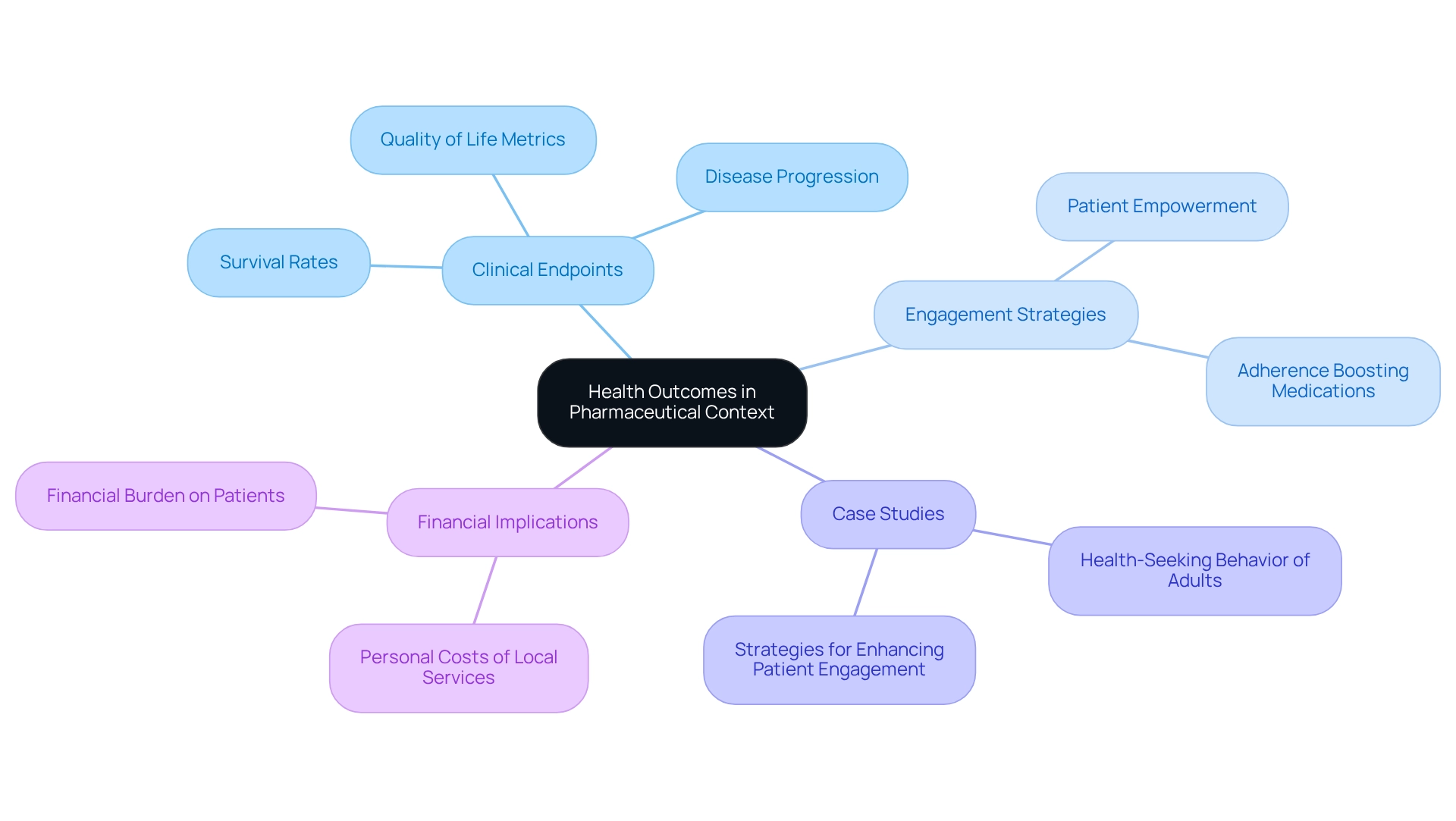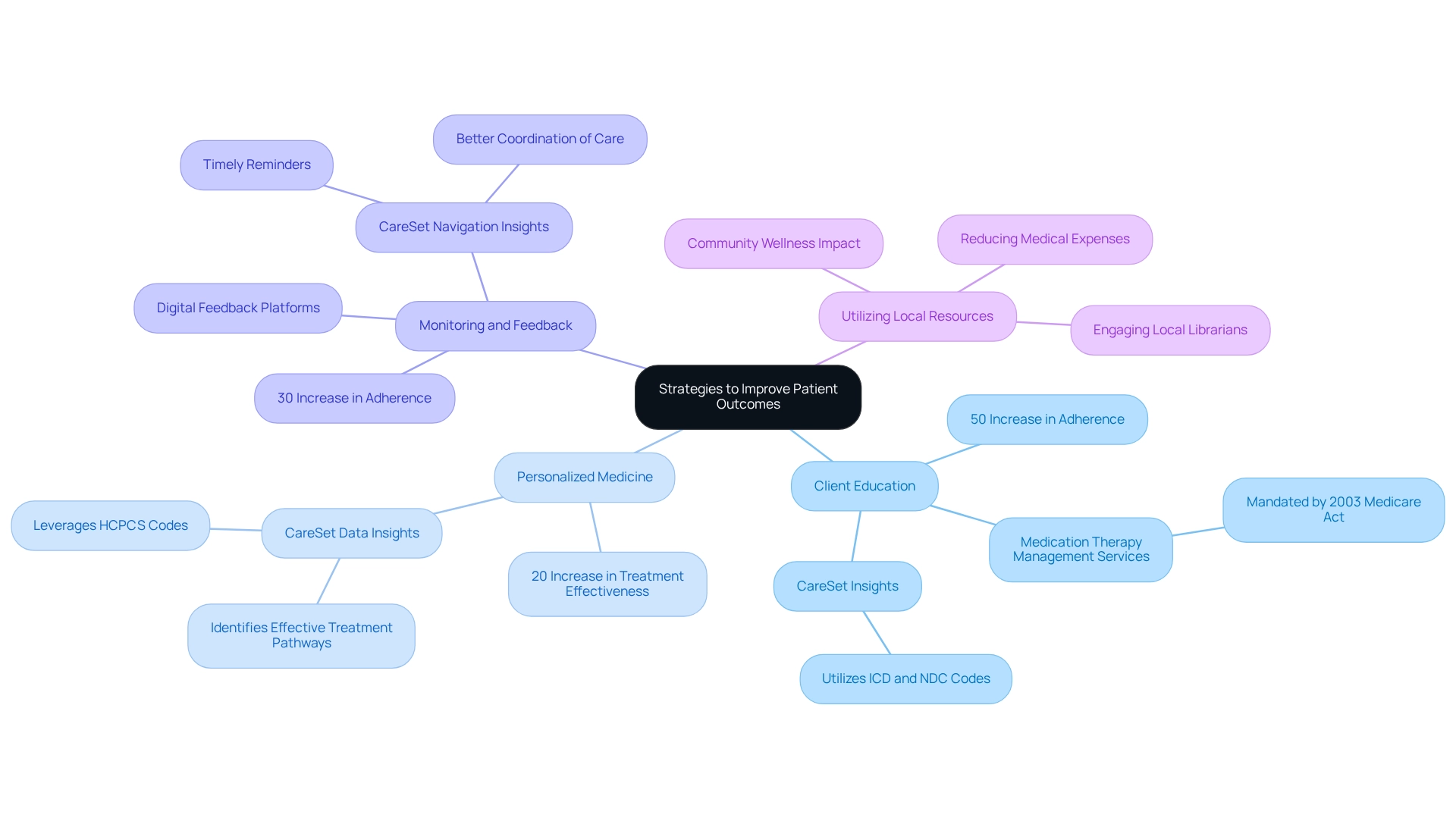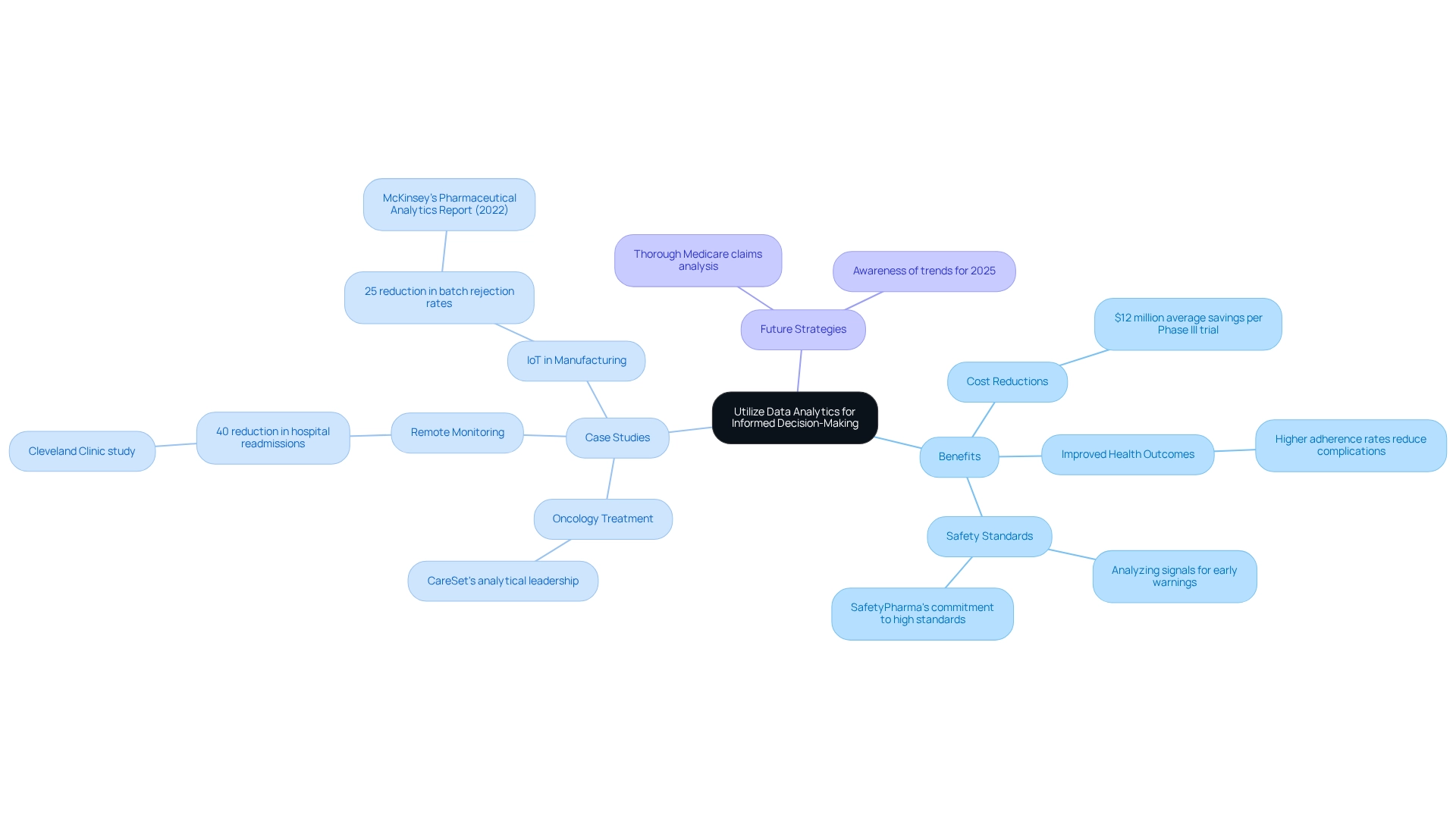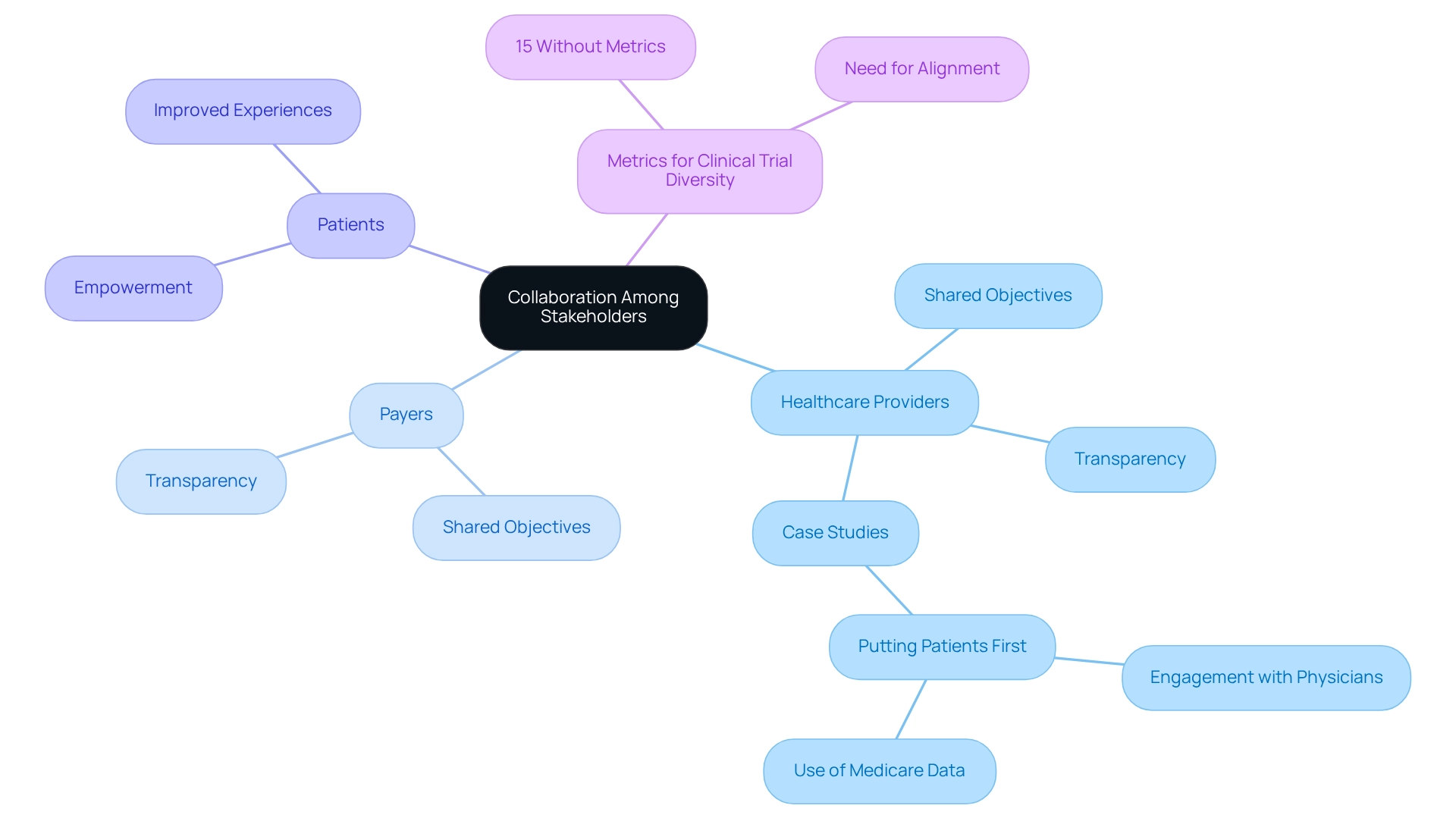Overview
The article centers on enhancing health outcome strategies to achieve pharmaceutical success, underscoring the critical role of patient engagement, education, and data analytics. It posits that effective strategies—including personalized medicine and stakeholder collaboration—can substantially improve treatment adherence and overall health outcomes. This assertion is bolstered by evidence drawn from case studies and data insights, illustrating the significant impact of these approaches. By engaging with these findings, stakeholders can better understand the pathways to improved health outcomes and the importance of a collaborative approach in the pharmaceutical landscape.
Introduction
In the dynamic landscape of healthcare, measuring health outcomes has emerged as a pivotal focus for pharmaceutical companies aiming to enhance patient care and demonstrate the value of their products. These outcomes, encompassing survival rates and quality of life metrics, provide critical insights into treatment effectiveness.
As the industry navigates the complexities of patient engagement and adherence, innovative strategies rooted in data analytics become essential tools for improvement. By fostering collaboration among stakeholders and prioritizing patient education, personalized medicine, and ongoing monitoring, pharmaceutical companies can significantly boost adherence rates and drive advancements in health outcomes.
This article explores the multifaceted nature of health outcomes within the pharmaceutical context, examining actionable strategies and the transformative power of data analytics in shaping the future of patient care.
Define Health Outcomes in Pharmaceutical Context
Health outcomes in the pharmaceutical context include the measurable effects of medications and treatments on patient health. These results include essential clinical endpoints such as survival rates, disease progression, and quality of life metrics. For pharmaceutical firms, understanding these health outcomes is crucial for evaluating product efficiency and effectively communicating value to healthcare professionals and insurers. Recent studies indicate that medications designed to boost adherence can significantly enhance overall well-being, emphasizing the direct connection between treatment effectiveness and health outcomes related to engagement strategies.
CareSet’s extensive Medicare data insights, particularly from the case study ‘PUTTING PATIENTS FIRST: Unlocking Medicare Data to Empower HCP,’ related to the oncology treatment Qinlock, illustrate how timely and meaningful engagement with healthcare providers can yield improved outcomes for individuals. Additionally, a systematic review and meta-analysis have fortified the evidence base for enhancing care across various conditions, emphasizing the intricate nature of health outcomes. Engaging individuals in their treatment plans has proven effective; case studies reveal that active participant engagement correlates with higher adherence rates, as empowered individuals are more likely to adhere to prescribed medication regimens. This approach not only bolsters personal health outcomes but also contributes to broader public welfare objectives, making it imperative for pharmaceutical stakeholders to prioritize the measurement of health outcomes in their strategies.
Moreover, the individual costs associated with utilizing local services, highlighted in five specific studies, underscore the financial burden on patients, which is critical for comprehending wellness results and compliance. As Gabriel M. Ronen noted, disability can be understood through the interactions between personal and environmental factors, further illustrating the complexity of well-being results. A collaborative effort is essential to effectively address the multifactorial nature of poor medication adherence, reinforcing the need for comprehensive strategies to improve health outcomes.

Implement Strategies to Improve Patient Outcomes
To improve health outcomes, pharmaceutical companies should prioritize several essential strategies:
-
Client Education: Comprehensive information about medications significantly enhances adherence, enabling individuals to make informed treatment decisions that positively affect their health outcomes. Statistics indicate that effective client education can enhance medication adherence rates by as much as 50%, underscoring its critical role in healthcare. Furthermore, medication therapy management services mandated by the 2003 Medicare Prescription Drug Improvement and Modernization Act further emphasize the importance of organized individual education in promoting adherence. CareSet’s monthly Medicare updates provide valuable insights into drug usage, assisting providers in effectively informing individuals using information from ICD and NDC codes.
-
Personalized Medicine: Customizing treatments based on genetic and demographic information has demonstrated remarkable effectiveness. For instance, personalized medicine strategies have resulted in a 20% increase in treatment effectiveness in specific population groups, showcasing the potential for enhanced health outcomes. CareSet’s comprehensive healthcare data insights can assist pharmaceutical companies in identifying the most effective treatment pathways for various demographics, leveraging HCPCS codes to refine strategies.
-
Monitoring and Feedback: Establishing systems for ongoing individual monitoring facilitates timely interventions when issues arise. A notable case study revealed that a pharmaceutical company implementing a digital platform for feedback from individuals experienced a 30% increase in adherence rates, highlighting the power of direct engagement. Moreover, CareSet’s insights into individual navigation from diagnosis to treatment can improve adherence by offering timely reminders and promoting better coordination of care among healthcare providers. CareSet identifies 15% more targets and 250% more individuals than leading claims vendors, showcasing its competitive edge in data solutions.
-
Utilizing Local Resources: Leveraging local resources, such as librarians, can assist patients in obtaining medical information and enhancing adherence. By streamlining everyday practices and providing valuable insights to medical practitioners, as highlighted by Hero, these strategies can significantly influence community wellness and reduce medical expenses linked to nonadherence. By concentrating on these strategies and utilizing CareSet’s innovative Medicare information solutions, pharmaceutical companies can not only enhance adherence but also promote better health outcomes, ultimately boosting the overall effectiveness of their products in the market.

Utilize Data Analytics for Informed Decision-Making
Utilize Information Analysis for Informed Decision-Making
Pharmaceutical companies must harness the power of information analysis to refine their decision-making processes. By exploring extensive datasets, such as CareSet’s comprehensive Medicare insights from over 62 million beneficiaries and 6 million providers, organizations can uncover critical trends in prescribing behaviors, demographics, and treatment outcomes. For instance, recent analyses of Medicare claims data have shown that specific demographic groups exhibit varying responses to particular treatments. This insight empowers companies to customize their marketing strategies and improve targeting effectively. Moreover, predictive analytics plays a crucial role in anticipating needs and optimizing resource allocation. This proactive approach not only leads to significant cost reductions but also results in improved health outcomes. Indeed, utilizing analytics has been associated with an average savings of $12 million per Phase III trial, as demonstrated by AstraZeneca’s recent efforts.
Key Case Studies and Metrics:
- A case study on oncology treatment options emphasizes how CareSet’s analytical leadership has enabled healthcare providers to connect significantly with physicians concerning treatment choices, ultimately improving care for individuals.
- Remote monitoring programs have demonstrated a remarkable 40% reduction in hospital readmissions for individuals with chronic heart failure, showcasing how connected devices can streamline treatment strategies.
- As McKinsey’s Pharmaceutical Analytics Report (2022) highlights, manufacturing facilities leveraging IoT sensors and real-time analytics have reduced batch rejection rates by 25% and significantly increased production throughput.
Additionally, CareSet’s new analytics products offer innovative solutions that further enhance the capabilities of pharmaceutical companies in utilizing information analysis effectively. SafetyPharma’s commitment to high safety standards reinforces the importance of analyzing signals from various sources, including social media, for early warnings about product safety issues. This aspect of analytics is vital for ensuring that pharmaceutical companies uphold high safety standards while making informed choices. Furthermore, higher adherence rates, propelled by effective analytics, can diminish the chances of costly disease complications and hospitalizations, highlighting the economic advantages of these strategies. As the landscape of healthcare changes, the incorporation of analytics into pharmaceutical decision-making will be essential for fostering innovation and enhancing health outcomes for patients. By concentrating on thorough Medicare claims information analysis and remaining aware of trends for 2025, companies can not only discover new opportunities but also guarantee that their strategies are guided by real-world evidence, ultimately resulting in more effective treatment methods.

Foster Collaboration Among Stakeholders
Collaboration among stakeholders—including healthcare providers, payers, and patients—is essential for enhancing health outcomes in the pharmaceutical sector. Engaging in partnerships that promote shared objectives and transparency can significantly elevate treatment effectiveness.
For instance, the case study titled “Putting Patients First: Unlocking Medicare Information to Empower HCP” illustrates how CareSet’s comprehensive healthcare insights enabled an oncology treatment manufacturer to engage more effectively with physicians regarding the 4th line of therapy for Gastrointestinal Stromal Tumor (GIST). The specific objective was to increase timely and meaningful engagement. This strategic use of Medicare data not only improved physician engagement but also empowered healthcare stakeholders with actionable insights that enhanced patient care and business success.
Moreover, statistics reveal that 15% of life sciences organizations have yet to establish metrics for assessing clinical trial diversity objectives, underscoring the critical need for better alignment in equity initiatives. As organizations invest in capabilities for equity initiatives, Susan Garfield, EY Americas chief public wellness officer, emphasizes that “there is significant work to be done to align efforts and amplify impact.”
By fostering these partnerships and leveraging comprehensive Medicare data solutions, pharmaceutical companies can enhance patient experiences and drive innovation in drug development, ultimately leading to improved health outcomes.

Conclusion
The exploration of health outcomes within the pharmaceutical context underscores the critical importance of measuring and understanding the impact of medications on patient health. By focusing on essential metrics such as survival rates and quality of life, pharmaceutical companies can more effectively assess the effectiveness of their products and the value they provide to healthcare providers and payers. Engaging patients through education and personalized medicine is paramount, as empowered patients are more likely to adhere to treatment regimens, ultimately enhancing both individual and public health outcomes.
Implementing innovative strategies, such as ongoing patient monitoring and leveraging local resources, significantly amplifies the potential for improved adherence rates. The integration of data analytics enables pharmaceutical companies to make informed decisions and optimize resource allocation, leading to better patient targeting and substantial cost savings. This data-driven approach is vital for anticipating patient needs and refining marketing strategies, ensuring that treatments align with real-world evidence and patient demographics.
Collaboration among stakeholders—healthcare providers, payers, and patients—remains crucial in this endeavor. By fostering partnerships that prioritize shared objectives and transparency, pharmaceutical companies can enhance treatment effectiveness and patient care. As the industry continues to evolve, the commitment to measuring health outcomes, utilizing data analytics, and engaging patients and stakeholders will be paramount in driving innovation, improving adherence, and ultimately transforming the landscape of patient care for the better.


